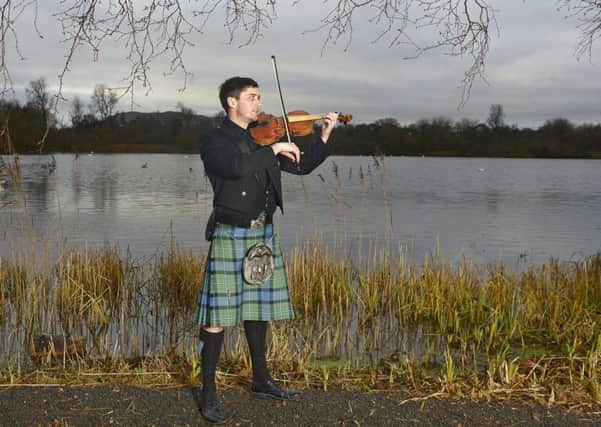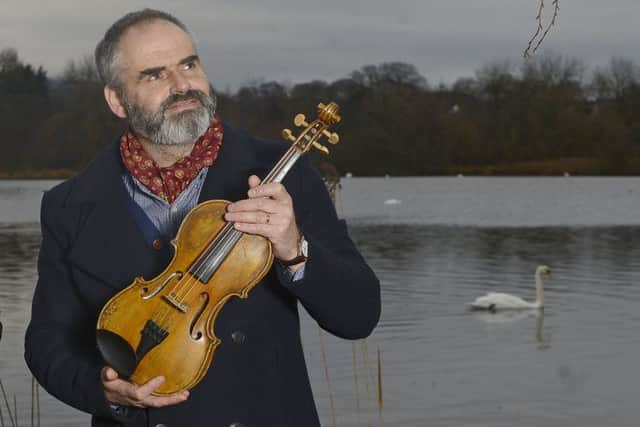Fiddles made from native trees set history to music


Steve Burnett, who started his music career in a punk band, has already made the Jacobite Fiddle using wood from an ancient tree in Prestonpans, East Lothian, where Bonnie Prince Charlie won the first main battle of the 1745 Rising.
Other works include the Wilfred Owen violin, made from wood taken from Craiglockhart, in Edinburgh, where the war poet received hospital treatment for shell shock during the First World War.
Advertisement
Hide Ad“I made my first violin after buying an old box of tools in a junk shop which had a half-made violin front in it,” said Burnett, whose workshop is in Haymarket in Edinburgh.


“My early violins were a bit rough and ready but people who tried them said they had a great sound. Scotland has an ancient violin-making tradition, with the instruments known as fiddles. Many were made by carpenters as an instrument for playing as part of our rich folk music traditions.
“I also love history and started to look at trees with connections to historic events and figures to pay tribute to them by bringing history alive with music for future generations.”
Burnett said he mostly uses sycamore wood and sometimes willow to make his fiddles, whose prices range from £3,000 to £4,000 upwards.
Tim Wright, owner of Tim Wright Fine Violins in Edinburgh, said Burnett’s violins were a welcome addition to those in the more traditional, mainstream classical style.


“Steve Burnett’s violins are really interesting. The violin was perfected in the 18th century by Antonio Stradivari and his contemporaries, and the tendency ever since has been to copy classical Italian instruments as closely as possible.
Advertisement
Hide Ad“Steve’s approach to violin- making is a somewhat more organic process than is often seen, taking inspiration from outside the violin world, and each his instruments is unique as a result.
“The Jacobite violin is particularly successful, visually and especially tonally having a full, bold sound. Steve has deliberately left the violin in a somewhat rustic state, leaving evidence of his tool marks, which gives the violin lots of character.”
Advertisement
Hide AdThe Jacobite Fiddle was launched at the major exhibition Bonnie Prince Charlie and the Jacobites at the National Museum of Scotland in Edinburgh earlier this year where musician Thoren Ferguson played The Skye Boat Song recalling Bonnie Prince Charlie’s escape to the Isle of Skye after his defeat at the Battle of Culloden in 1746.
Ferguson, of The Jacobites ceilidh band, who uses the Jacobite Fiddle in his performances, said: “The Jacobite Fiddle is quite remarkable. All fiddles have a totally unique character and this one has a real energy, a real bite and attack that when you play it you can’t help but evoke the momentous events of the Jacobites.
“All of Steve’s fiddles are different because they are hand-made and each one is a slightly different shape too.”